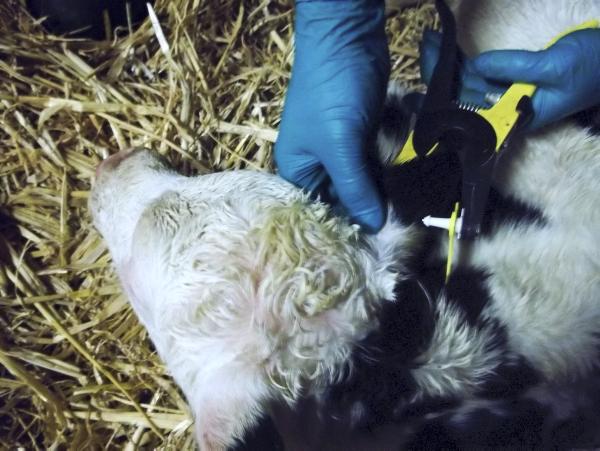It has been confirmed to the Irish Farmers Journal that tissue tag testing for BVD (Bovine Viral Diarrhoea) of all calves born will continue for another year. The decision was made by the BVD implementation group at a recent meeting.
Originally the programme was designed to encompass three years of tissue tag testing followed by a further three years of herd-level monitoring. Those who entered the voluntary phase in 2012 have completed four full years of tissue tag testing after it was extended for them last year. The compulsory phase started in January 2013 and is now in its third year. Farmers who took part in both the voluntary and compulsory phases will have to continue tissue tag testing for at least next year.
Retained PIs to blame
The reason for the decision has been driven by the level of retained PI (persistently infected) calves on farms around the country. Since the introduction of the programme in 2012, there has been reluctance by some farmers to dispose of PI calves which look healthy at birth. According to AHI statistics, about 1,256 PI calves which were born this year remain alive on 743 farms. While this is only a tiny amount of the 1.9m calves tested so far this year, it still results in a real threat to naive herds around the country.
While the number remains considerable, it is a real reduction on the number of PI calves retained on farms last year. Suckler farmers continue to harbour most of these PI calves, which is understandable considering that the calf represents the only output from that cow in a given year. However, the costs and associated risks almost always outweigh the up-front cost of culling a PI calf.
The higher levels of disposals so far in 2015 are thought to be due to improved compensation payments (increasing from €100 for the second and subsequent PI calf in 2013 to €140 per suckler calf and €100 per dairy calf disposed of within five weeks of testing, and €90 for a suckler and €50 for a diary calf disposed from five to seven weeks of testing in 2015) for calves born in suckler herds this year compared with previous years.
In addition to this improved incentive, the requirement for all farmers partaking in the BDGP (Beef Data and Genomics Programme) to remove all BVD PI animals born from 2012 to the closing date for applications (bar those born in the seven weeks prior to the closing date) in order to be deemed eligible for the scheme has incentivised the removal of PI calves from beef herds over the last few months.
PI levels reducing
In 2013, the first year of the compulsory programme, about 0.66% of animals tested were PIs. So far this year, just 0.32% or 6,197 animals have returned a PI status, which underlines the fact that the programme is meeting its goals. In addition, anecdotal evidence from veterinary practitioners around the country suggests that the incidence of disease in some herds has reduced dramatically in line with the removal of BVD PIs.
Retained PI letters
It is understood that in the coming weeks the Department of Agriculture will distribute letters to farmers informing them of any neighbouring holding which has retained PI calves. While the name and shame policy may not sit well with those farmers who retained PI calves, it will inform neighbouring holdings of the presence or possible presence of PI calves in their area. It also provides and additional incentive to push farmers towards removing PI calves. It is advisable to consult your vet to discuss possible ways of safeguarding your herd.
As the prevalence of BVD reduces, herds will become more naive and any immunity to the disease in the national herd will decrease. While the introduction of a vaccination programme is not necessary for many farmers, it may be worth considering as a safeguard for the herd, especially where there is history of a BVD risk in the surrounding area.
Click here for more from our Animal Health 2015 special supplement






 This is a subscriber-only article
This is a subscriber-only article










SHARING OPTIONS: